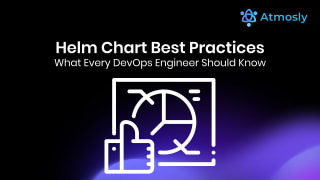Scalability is a critical factor in product development that ensures that your application and infrastructure are designed to handle higher loads without sacrificing performance or reliability. Attaining scalability in your project could be horizontal Vs vertical. It is horizontal scaling when adding more machines or instances to your infrastructure to handle increased load. On the other hand, it is vertical scaling when it involves upgrading the resources of your existing machines to handle increased load. By understanding the differences between these approaches, you can make informed decisions about how to scale your application effectively and ensure its success in the long term.
What is Horizontal Scaling?
Horizontal scaling, often called scaling out, is adding more machines or instances to your infrastructure to handle increased load. This approach allows you to distribute the workload across multiple machines, improving performance and reliability. This approach is particularly useful for applications that need to handle a large number of concurrent users or transactions. By distributing the workload across multiple machines, horizontal scaling can improve performance and reliability.

Benefits of Horizontal Scaling
- Improved Performance and Reliability: By spreading the workload across multiple machines, horizontal scaling can improve your application's overall performance and reliability. It can help reduce the risk of downtime and ensure that your application remains responsive even under heavy load.
- Cost-Effectiveness through Commodity Hardware: Horizontal scaling can be more cost-effective than vertical scaling, as it allows you to use cheaper commodity hardware. Instead of investing in expensive high-end servers, you can use a larger number of less powerful machines, leading to significant cost savings.

Challenges of Horizontal Scaling
Data Consistency and Synchronization: One of the biggest challenges of horizontal scaling is ensuring data consistency and synchronization across multiple instances. Managing data across distributed systems can be complex and requires careful coordination to avoid conflicts and inconsistencies.
The complexity of Managing a Distributed System: Horizontal scaling often involves managing a distributed system, which can be more complex than managing a single server. It requires expertise in load balancing, network configuration, and monitoring to ensure the system operates smoothly.
How Atmosly Helps with Horizontal Scaling
Atmosly provides several features and tools to help you scale your application horizontally:
- Integration with Cloud Providers for Auto-Scaling: Atmosly integrates with popular cloud providers, such as AWS, Azure, and Google Cloud, to provide auto-scaling capabilities. This allows you to automatically add or remove instances based on the current workload, ensuring your application remains responsive and cost-effective.
- Support for Distributed Architectures and Microservices: Atmosly supports distributed architectures and microservices, key horizontal scaling components. By breaking down your application into smaller, more manageable services, you can scale each component independently, allowing for greater flexibility and agility in your infrastructure.
What is Vertical Scaling?
Vertical scaling, also known as scaling up, involves upgrading the resources of your existing machines to handle increased load. This approach allows you to increase the capacity of a single machine rather than adding more machines to your infrastructure. This approach is useful for applications that have reached the limits of their current hardware and need more processing power or memory. Vertical scaling can improve performance, but it may be more expensive and less flexible than horizontal scaling.

Benefits of Vertical Scaling
- Simplified Infrastructure Management: Vertical scaling can simplify infrastructure management, as you only need to manage a single, larger machine rather than multiple smaller machines. This can reduce complexity and make monitoring and maintaining your infrastructure easier.
- Potential for Better Performance in Certain Cases: In some cases, vertical scaling can provide better performance than horizontal scaling. By upgrading the resources of a single machine, you can improve its processing power, memory, and other capabilities, leading to better overall performance.

Challenges of Vertical Scaling
- Cost Inefficiency at Higher Scales: Vertical scaling can become cost-efficient at higher scales, as upgrading a single machine can be significant. Additionally, there may be limits to how much you can scale vertically, depending on your infrastructure's hardware and software limitations.
- Hardware Limitations and Bottlenecks: Vertical scaling is limited by the hardware capabilities of your machines. As you scale up, you may encounter bottlenecks and limitations that cannot be easily overcome without significant investment in new hardware.
How Atmosly Helps with Vertical Scaling
Atmosly provides several features and tools to help you scale your application vertically:
- Monitoring and Optimizing Resource Usage: Atmosly allows you to monitor resource usage in real-time, including CPU, memory, and disk usage. This can help you identify bottlenecks and optimize resource usage to improve performance and scalability.
- Providing Recommendations for Hardware Upgrades or Cloud Instances: Atmosly can provide recommendations for hardware upgrades or cloud instances based on your application's resource usage and performance metrics. This can help you make informed decisions about when and how to scale vertically, ensuring that you have the resources you need to meet demand.
Key Differences and Considerations
Here's a comparison table highlighting the key differences between vertical and horizontal scalability:

Factors Influencing the Choice Between Horizontal and Vertical Scaling:
You may want to choose between the two types of scaling but need a guide. This article will help you make your choice. By carefully considering the factors below and your application's specific requirements, you can choose the scalability approach that best suits your needs;
Application Architecture:
- Some applications are better suited for horizontal scaling, especially those that can be easily divided into smaller, independent components (e.g., microservices).
- Others may benefit more from vertical scaling, especially those that require increased processing power or memory for certain tasks.
Budget and Resource Constraints:
- Horizontal Scaling: Generally more cost-effective, especially for applications with unpredictable or fluctuating workloads.
- Vertical Scaling: This may be more suitable for applications with more predictable and stable workloads, where the cost of upgrading hardware is justified.
Future Growth Projections:
- Consider your application's expected growth and scalability requirements. Horizontal scaling may be more suitable for applications that anticipate rapid or unpredictable growth, while vertical scaling may be more suitable for applications with more predictable growth patterns.
How to Scale Horizontally
Overview of the Horizontal Scaling Process: Horizontal scaling involves adding more machines or instances to your infrastructure to handle increased load. This approach allows you to distribute the workload across multiple machines, improving performance and reliability. Implementing horizontal scaling requires careful planning and coordination to ensure that your infrastructure can scale effectively.
Step-by-Step Guide to Implementing Horizontal Scaling:
Identifying Bottlenecks and Performance Metrics:
- Before implementing horizontal scaling, it's important to identify any bottlenecks or performance issues in your application. This can help you understand where scaling is needed and how it will impact your infrastructure.
Selecting Appropriate Technologies and Tools:
- Choose technologies and tools that support horizontal scaling, such as container orchestration platforms like Kubernetes or cloud services like AWS Auto Scaling. These tools can help you manage and scale your infrastructure more efficiently.
Configuring Load Balancers and Auto-Scaling Groups:
- Set up load balancers to distribute incoming traffic evenly across your instances. This helps ensure that no single instance is overwhelmed with requests. Configure auto-scaling groups to automatically add or remove instances based on traffic demand, allowing your infrastructure to scale dynamically.
Testing and Monitoring the Scaled Infrastructure:
- Once you've implemented horizontal scaling, it's important to test and monitor your infrastructure to ensure that it's working as expected. Use tools like Prometheus or Grafana to monitor performance metrics and identify any issues that may arise.
How to Scale Vertically
Overview of the Vertical Scaling Process: Vertical scaling, also known as scaling up, involves upgrading the resources of your existing machines to handle increased load. This approach allows you to increase the capacity of a single machine rather than adding more machines to your infrastructure. Implementing vertical scaling requires careful planning and consideration of your hardware and software requirements.
Step-by-Step Guide to Implementing Vertical Scaling:
Identifying Hardware Limitations and Performance Bottlenecks:
- Before implementing vertical scaling, it's important to identify any hardware limitations or performance bottlenecks in your infrastructure. This can help you understand where scaling is needed and how it will impact your application.
Selecting Suitable Hardware Upgrades or Cloud Instances:
- Choose hardware upgrades or cloud instances that meet your application's resource requirements. Consider factors such as CPU, memory, and storage capacity when selecting hardware upgrades or cloud instances.
Migrating to Larger Resource Configurations:
- Once you've selected suitable hardware upgrades or cloud instances, migrate your application to the new environment. This may involve shutting down your application temporarily to perform the migration, so be sure to plan accordingly.
Testing and Validating the Scaled Environment:
- After migrating to the new environment, it's important to test and validate the scaled environment to ensure that it's working as expected. Test performance metrics such as CPU usage, memory usage, and response times to verify that the new environment can handle increased load.
When to Scale Horizontally vs Vertically
Decision-Making Factors for Choosing the Right Scaling Approach:
Current Workload Characteristics:
- Horizontal Scaling: Consider horizontal scaling when your application experiences a high volume of concurrent users or transactions. Horizontal scaling is effective for distributing the workload across multiple machines.
- Vertical Scaling: Consider vertical scaling when your application requires more processing power or memory for certain tasks. Vertical scaling is effective for applications with a single point of failure or bottleneck.
Future Growth Projections:
- Horizontal Scaling: If your application is expected to grow rapidly or unpredictably, horizontal scaling may be more suitable. Horizontal scaling allows you to add more instances as needed, providing flexibility and scalability.
- Vertical Scaling: If your application's growth is more predictable, vertical scaling may be more suitable. Vertical scaling allows you to upgrade your existing hardware to meet increased demand, providing a more controlled and stable growth path.
Budget and Resource Constraints:
- Horizontal Scaling: Horizontal scaling is generally more cost-effective, as it allows you to use cheaper, commodity hardware. It also provides more flexibility in terms of resource allocation, allowing you to scale based on demand.
- Vertical Scaling: Vertical scaling can be more expensive, especially at higher scales, as it involves upgrading to more powerful (and often more expensive) hardware. However, it may be more cost-effective in the long run for applications with predictable growth patterns.
Real-World Examples of When Each Approach is Most Suitable:
Here's a table outlining real-world examples of vertical and horizontal scaling, along with when each approach is most suitable:

Conclusion
If you want to grow and improve the performance of your product or applications, you have to think about “scalability.” Your journey starts with choosing between vertical Vs horizontal scaling to improve your application's performance and scalability. While vertical scaling involves upgrading existing hardware to handle increased load, horizontal scaling adds more machines to distribute the workload.
Engineering platforms like Atmosly play a crucial role in helping you scale your product. For vertical scaling, Atmosly's monitoring tools help identify bottlenecks and performance issues, guiding you in selecting suitable hardware upgrades or cloud instances. For horizontal scaling, Atmosly integrates with cloud providers for auto-scaling, allowing your application to add or remove instances based on workload dynamically. Additionally, Atmosly supports distributed architectures and microservices, enabling you to scale each component independently for greater flexibility and agility.
To achieve scalability with Atmosly, follow these steps:
- Identify bottlenecks and performance metrics in your application.
- Select appropriate technologies and tools for scaling.
- Configure load balancers and auto-scaling groups for horizontal scaling.
- Monitor and test the scaled infrastructure to ensure optimal performance.
By leveraging Atmosly's features and tools, you can scale your application effectively, ensuring its performance, reliability, and cost-effectiveness as it grows.






